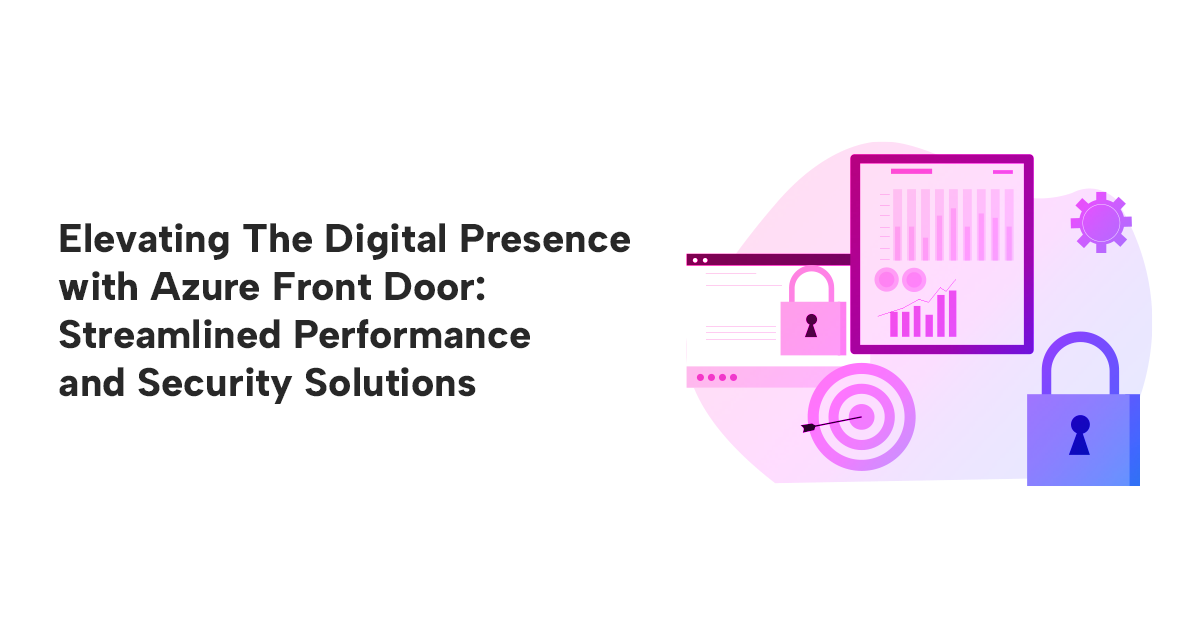Elevating The Digital Presence with Azure Front Door: Streamlined Performance and Security Solutions
Mar 01,2024
Introduction
The customer is a healthcare provider, hoping on a digital transformation initiative to deploy a Software as a Service (SaaS) application on Microsoft Azure. The primary goals were to enhance the availability, security, and compliance of their healthcare solutions, and to ensure a seamless user experience for their global clientele.
Challenges
The customer faced challenges related to deploying a SaaS application with strict security requirements while adhering to healthcare data privacy regulations. They sought a solution that could efficiently route traffic through a centralized network hub, enforce security controls, and optimize the user experience.
Technology Solutions
Intuitive leveraged its Azure networking and security expertise to support this customer in a transformation effort. Intuitive recommended Azure Front Door for global load balancing for efficient traffic distribution across multiple Azure regions. SSL termination for secure and optimized content delivery and Web Application Firewall (WAF) for protection against web vulnerabilities and threats.
Implementation Strategy
Implementing Azure Front Door requires careful planning and execution to ensure optimal performance, reliability, and security. Below is an implementation strategy Intuitive majorly focused on for Azure Front Door implementation.
- Define Objectives and Requirements:
Clearly define the objectives of implementing Azure Front Door, such as improving global web performance, ensuring high availability, and enhancing security. - Evaluating Network Architecture:
Assess existing network architecture to understand how Azure Front Door will integrate with cloud infrastructure. Identify the regions where applications are deployed and determine the optimal setup for global load balancing. - Set Up Azure Front Door:
In the Azure portal, create a new Azure Front Door instance.
Configure the frontend hosts and backends to define how traffic will be routed.
Set up routing rules to define the behavior of the traffic based on various conditions. - SSL Termination:
Configure SSL termination at Azure Front Door to offload SSL processing from backend servers. Upload SSL certificates for domains to enable secure connections. - Web Application Firewall (WAF):
For security concerns, Intuitive team configured the Web Application Firewall (WAF) to protect the applications from common web vulnerabilities and define the WAF policies based on security requirements. - Scale and Optimize:
Monitoring performance metrics and scale resources as needed to handle increased traffic and continuously optimizing routing rules, backend configurations, and security policies based on real-world traffic patterns.
Results and Impact
After implementing Azure Front Door for the customer, customer could see below benefits and impact.
- Global Availability and Redundancy:
Azure Front Door ensured global availability and redundancy by directing traffic to the nearest and most available Azure region. - Security and Compliance:
Web Application Firewall (WAF) and Azure Firewall provide robust security controls, protecting the SaaS application and ensuring compliance with healthcare data regulations. - Scalability:
The multi-region deployment allows for scalability and resiliency, accommodating growing user demand and ensuring optimal performance. - Efficient Traffic Routing:
Azure Front Door optimizes traffic routing, directing users to the most responsive Azure region, enhancing user experience.
Conclusion
The deployment of Azure Front Door with WAF, combined with a multi-region architecture and centralized Core VNet services, provides our healthcare customer with a secure, scalable, and highly available SaaS application. This solution addresses the unique challenges of the healthcare industry, positioning the customer for digital innovation and compliance with evolving healthcare data privacy standards.




